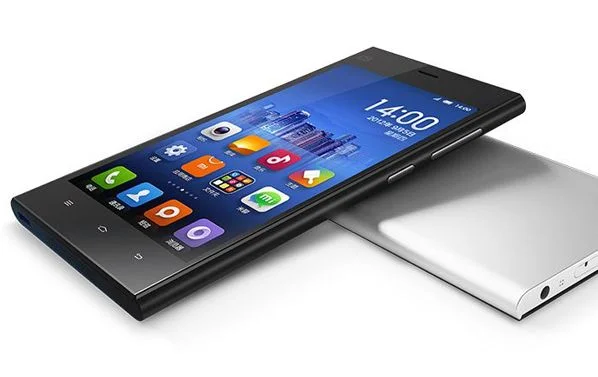Xiaomi's Memory Price Hike: What's Behind It?
The 2026 Smartphone Squeeze: Are We Headed for a Price Shock?
The smartphone market is bracing for a potential price hike in 2026, driven by a memory chip shortage. Xiaomi President Lu Weibing has publicly stated the company has secured its memory supply for the year, but warned that rising component costs, particularly memory, will inevitably translate to higher prices for consumers. Samsung, too, is feeling the pressure as it gears up for the Galaxy S26 launch.
This isn't just about a few extra dollars at the checkout. The memory crunch is a symptom of a larger shift in the tech landscape, fueled by the insatiable demand for AI processing power. All those AI features we're seeing in new phones? They require more memory, and that increased demand is pushing prices upward.
Xiaomi's response is particularly interesting. They're strategically climbing the value ladder, pushing premium models like the Mi 17 series to compete directly with Apple’s iPhone 17. In October, they already bumped prices on the Redmi K90 flagship, citing rising memory costs. This suggests a calculated bet that consumers are willing to pay more for high-end features, even if it means a bigger dent in their wallets. The South China Morning Post, citing Lu, further notes that rising memory chip prices could squeeze smartphone vendors’ profits and hit domestic players in China hardest. Some companies will fall behind—or even exit the market, Lu reportedly cautioned. Are you a robot?
The question is, will this strategy work? Can Xiaomi successfully position itself as a premium brand, or will consumers balk at the higher prices and opt for cheaper alternatives (possibly from brands that haven't secured their memory supply)?
Samsung's Balancing Act: Innovation vs. Affordability
Samsung faces a similar dilemma. While soaring memory prices are good news for their Device Solutions Division (which produces memory chips), they threaten the profit margins of their Mobile eXperience (MX) business. They're evaluating Galaxy S26 pricing, but the situation is complicated by a 25.5% year-on-year jump in Qualcomm application processor (AP) expenses. (They reportedly shelled out around 11 trillion won for APs in Q3).

In other words, it's a double whammy: more expensive memory and more expensive processors. Samsung raised prices on certain memory chips by 30–60% this month.
TrendForce's analysis paints a grim picture for overall smartphone production in 2026. They've lowered their global production forecasts, projecting a 2% year-on-year decrease compared to a previous estimate of a 0.1% increase. Notebook production is also expected to shrink. This suggests that the memory crunch isn't just impacting individual companies; it's having a ripple effect across the entire industry. [News] Memory Crunch Hits Smartphones: Xiaomi Flags 2026 Price Hikes, Samsung Under Memory, AP Pressure
I've looked at hundreds of these forecasts, and the scale of this revision is unusual. It tells me that TrendForce believes the price increases will have a significant impact on consumer demand.
The Great Smartphone Correction?
The smartphone market has been relatively stable for years, with incremental improvements and predictable pricing. But the memory crunch could be a catalyst for a major shakeup. We might see a consolidation of the market, with smaller players struggling to compete and larger companies focusing on premium segments.
Will consumers accept these higher prices, or will we see a shift towards longer upgrade cycles or a resurgence of the budget phone market? And what about the impact on emerging markets, where affordability is a key factor? These are critical questions that will shape the future of the smartphone industry.
Expect Sticker Shock
The numbers don't lie: smartphone prices are going up. The question is, by how much, and how will consumers react? Prepare for some tough choices when the next generation of phones hits the market.
-

MetaMask's Airdrop Buzz: Token Claim vs. KYC Verification
ASmokeScreen,oraSignal?Weigh...
-

Warren Buffett's OXY Stock Play: The Latest Drama, Buffett's Angle, and Why You Shouldn't Believe the Hype
Solet'sgetthisstraight.Occide...
-

The Great Up-Leveling: What's Happening Now and How We Step Up
Haveyoueverfeltlikeyou'redri...
-

The Business of Plasma Donation: How the Process Works and Who the Key Players Are
Theterm"plasma"suffersfromas...
-

The Nebius AI Breakthrough: Why This Changes Everything
It’snotoftenthatatypo—oratl...
- Search
- Recently Published
-
- Apple Layoffs: What's Happening Now and the Vision for 2025
- OpenAI News Today: Updates and the Future of AI – What Reddit is Saying
- LLY Stock: Price Today – What's Really Going On?
- Xiaomi's Memory Price Hike: What's Behind It?
- Stock Market Rollercoaster: Ray Dalio's Bubble Warning vs. AI Hype
- Nvidia Stock Fizzle: Rate-Cut Hopes Dashed and What It Means
- SRL Stock: Meaning, Fall Protection, and Score
- John Malone: Liberty Media, Streaming, and What Big Tech Regulators Should Actually Do
- Shameless Auction Pulled: What Happened and Why?
- Open: What's Actually Open and Why You Should Probably Stay Home
- Tag list
-
- carbon trading (2)
- Blockchain (11)
- Decentralization (5)
- Smart Contracts (4)
- Cryptocurrency (26)
- DeFi (5)
- Bitcoin (29)
- Trump (5)
- Ethereum (8)
- Pudgy Penguins (5)
- NFT (5)
- Solana (5)
- cryptocurrency (6)
- XRP (3)
- Airdrop (3)
- MicroStrategy (3)
- Stablecoin (3)
- Digital Assets (3)
- PENGU (3)
- Plasma (5)
- Zcash (5)
- Aster (4)
- investment advisor (4)
- crypto exchange binance (3)
- SX Network (3)
